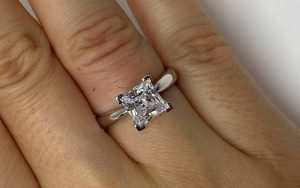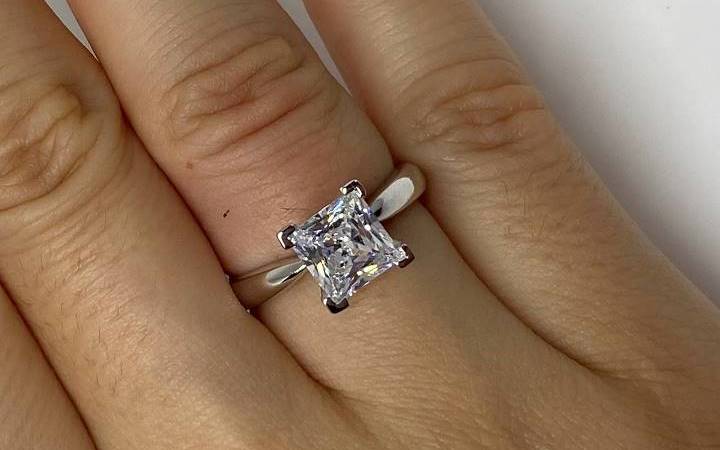 For centuries, diamonds have been highly regarded. Throughout cultures and countries around the world, diamonds are coveted and admired. Whatever your reason for choosing a diamond ring, there are some important details to keep in mind. It is also important to shop for the best engagement ring at reputable stores to avoid poor-quality gemstones.
For centuries, diamonds have been highly regarded. Throughout cultures and countries around the world, diamonds are coveted and admired. Whatever your reason for choosing a diamond ring, there are some important details to keep in mind. It is also important to shop for the best engagement ring at reputable stores to avoid poor-quality gemstones.
Instructions
Familiarize yourself with the Four Cs: cut, color, clarity, and carat weight. These are the four most important factors to consider when choosing a diamond ring. You’ll also need to consider the shape of the diamond (for example, pear, round, or emerald).
Identify the cut of the diamond
Some people think that the “cut” of the diamond refers to the shape of the diamond. This is not true. The cut refers to the way the gemstone is cut, and you will be able to identify these as the ridges and smooth areas on the diamond’s surface. The cut gives a diamond shine, or sparkle. A well cut diamond will reflect a significant amount of light back into the viewer’s eye and will appear very sparkly or brilliant. A poorly cut diamond will cause light to leak through the back of the diamond and it will look darker and less reflective. The diamond cut rating scale is (from best to worst) Ideal,
Inspect the color of the diamond
The best diamonds are colorless or near colorless. The hue, or color, found in a diamond is the result of impurities. The presence of impurities or color in a diamond can greatly affect its value. A diamond’s color is graded on a letter scale from “D” through “Z.” “D” through “F” is considered colorless. “G” through “I,” near colorless. “J” through “M”, pale yellow. “N” to “R”, very light yellow, and “S” to “Z”, light yellow. The lighter the color, the more valuable diamond. If the setting will be platinum or white gold, choose a higher color grade.
Check for clarity
Clarity refers to the presence of internal flaws and external blemishes on the diamond. A flawless diamond is very rare. Using a triplet loupe (the eyepiece that jewelers use to inspect gemstones) at 10x magnification, a diamond that has no notable flaws will be graded “F,” or flawless. VVS1-VVS2 medium very, very slightly included and the defects are difficult to identify with a magnifying glass. VS1-VS2 is very little included which means the flaws can only be seen with a magnifying glass. SI1-SI2 indicates that the diamond is slightly flawed and can be easily identified under magnification. Lastly, I1-I2-I3 diamonds have flaws that are easily detected and may be visible to the unaided eye.
Decide on carat weight
Two rings of the same carat weight can vary dramatically in prices depending on the quality of the stone (cut, color and clarity). A carat is a measure of weight that is equal to 200 milligrams. The karat choice is usually determined by a number of elements, one being your budget. If the quality of the stone is more important, you may have to choose a smaller carat to fit into your budget, but if the size is the more important factor, you can go further down the quality scale. The best method is to try to find a balance between the factors of size and quality. Get a higher quality 3/4 carat stone instead of a full carat stone that is very light yellow in color, for example.
Comparison of various diamonds of different sizes and shapes, with different cuts and clarity. No two diamonds are the same. Don’t just look at one or two. To get a diamond that you love, you need to see a lot of them. Be sure to choose a diamond ring that you will be able to look at for years to come.
